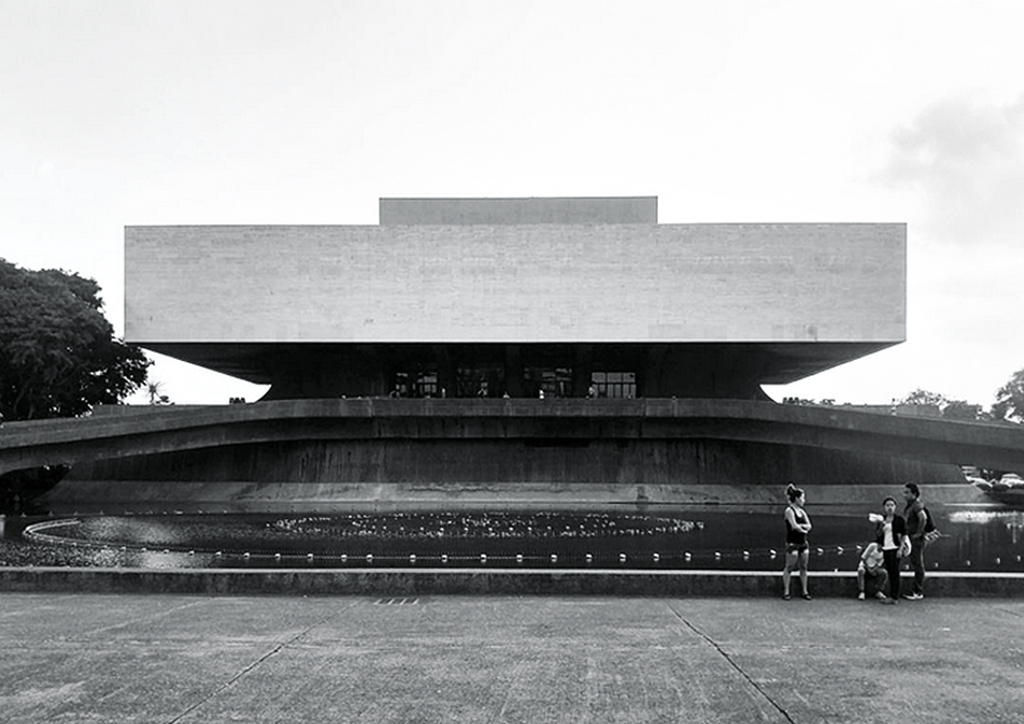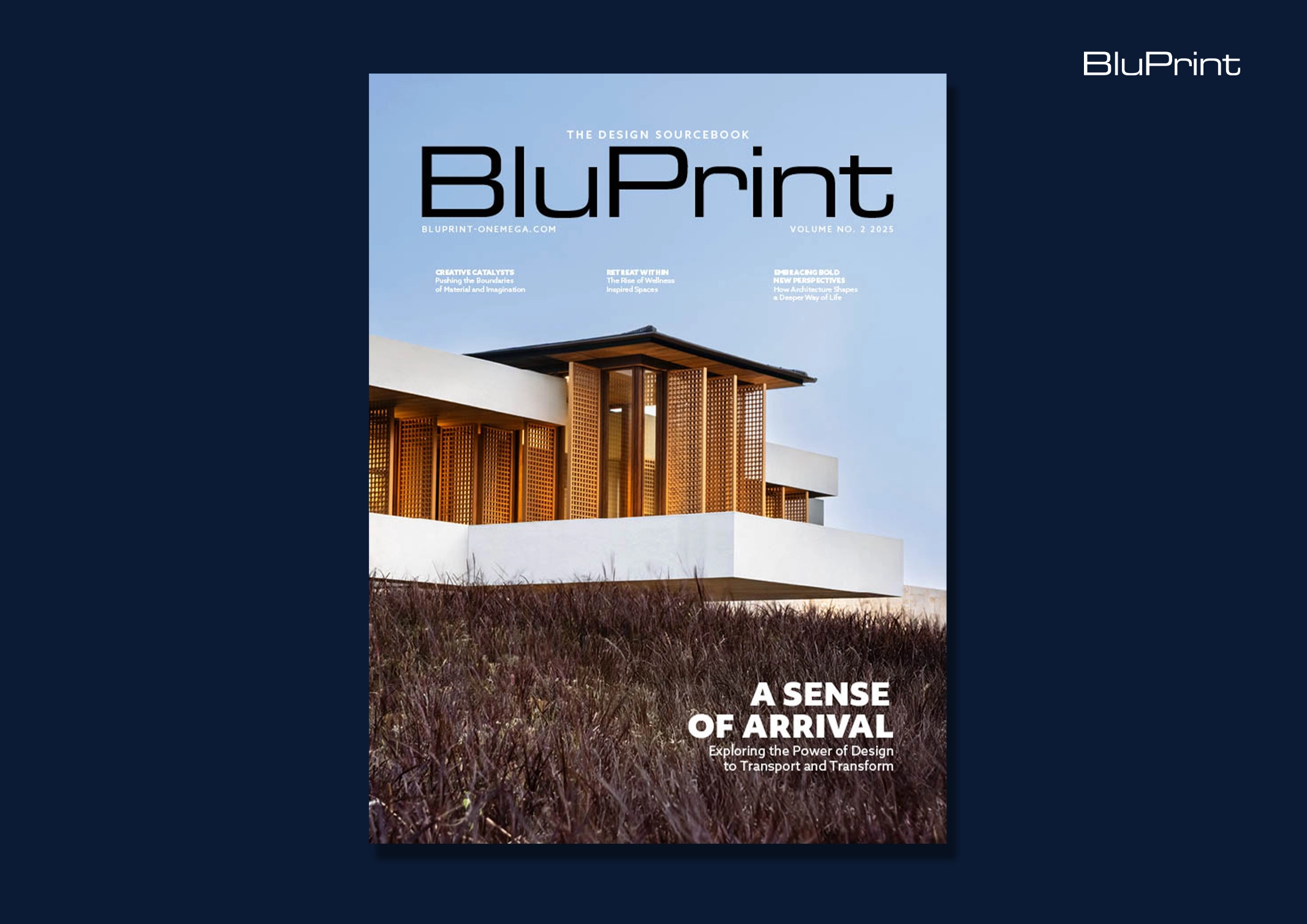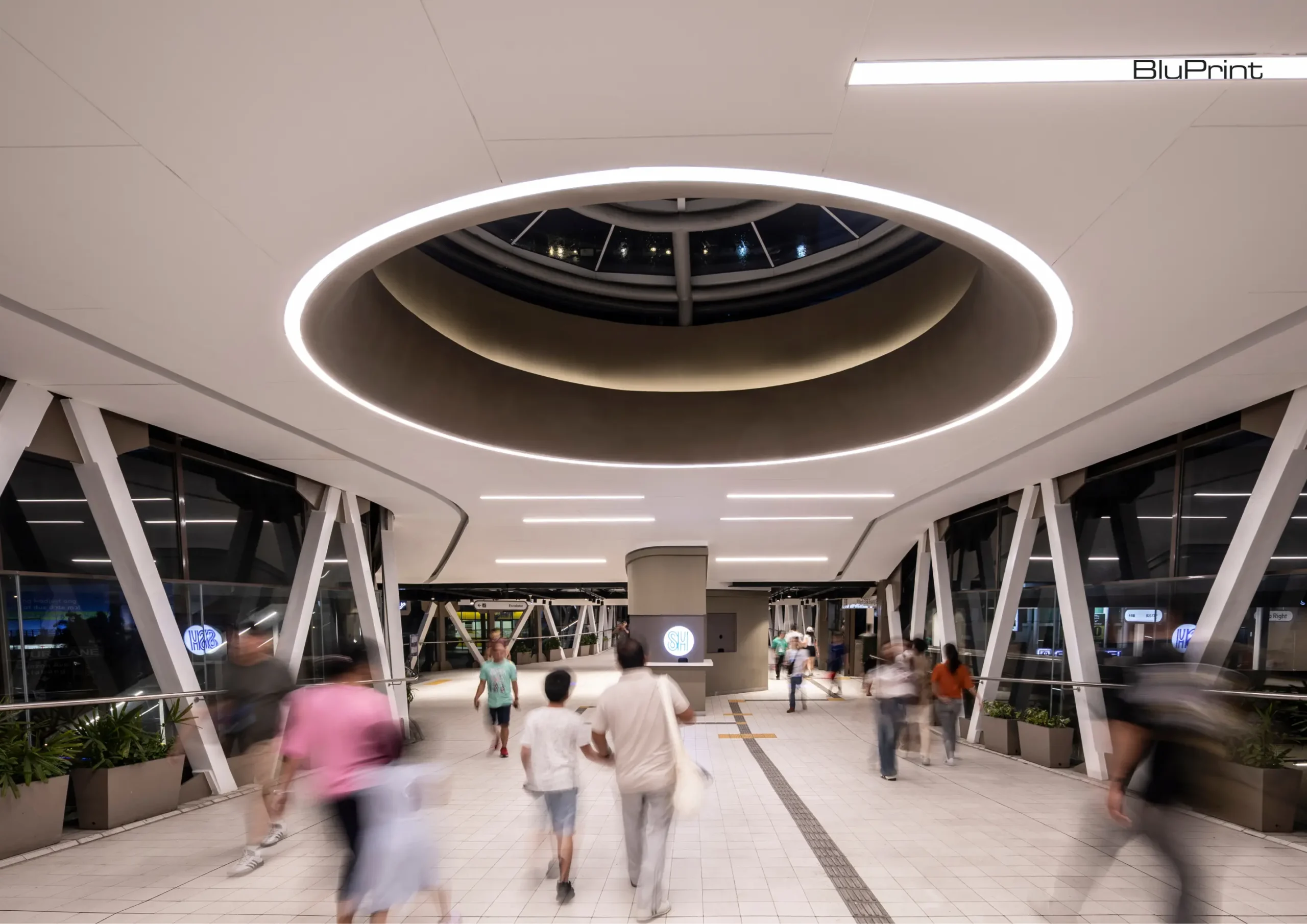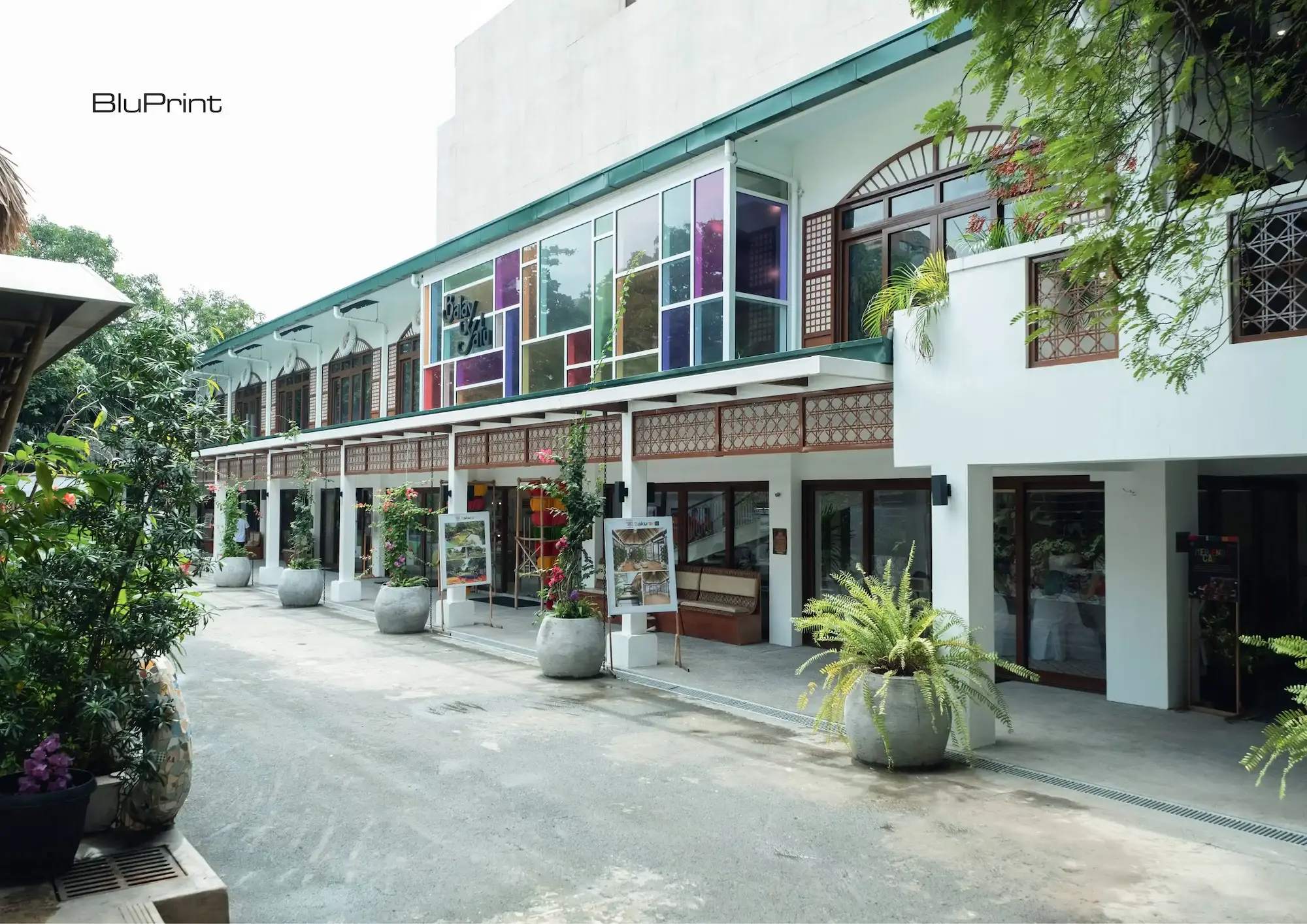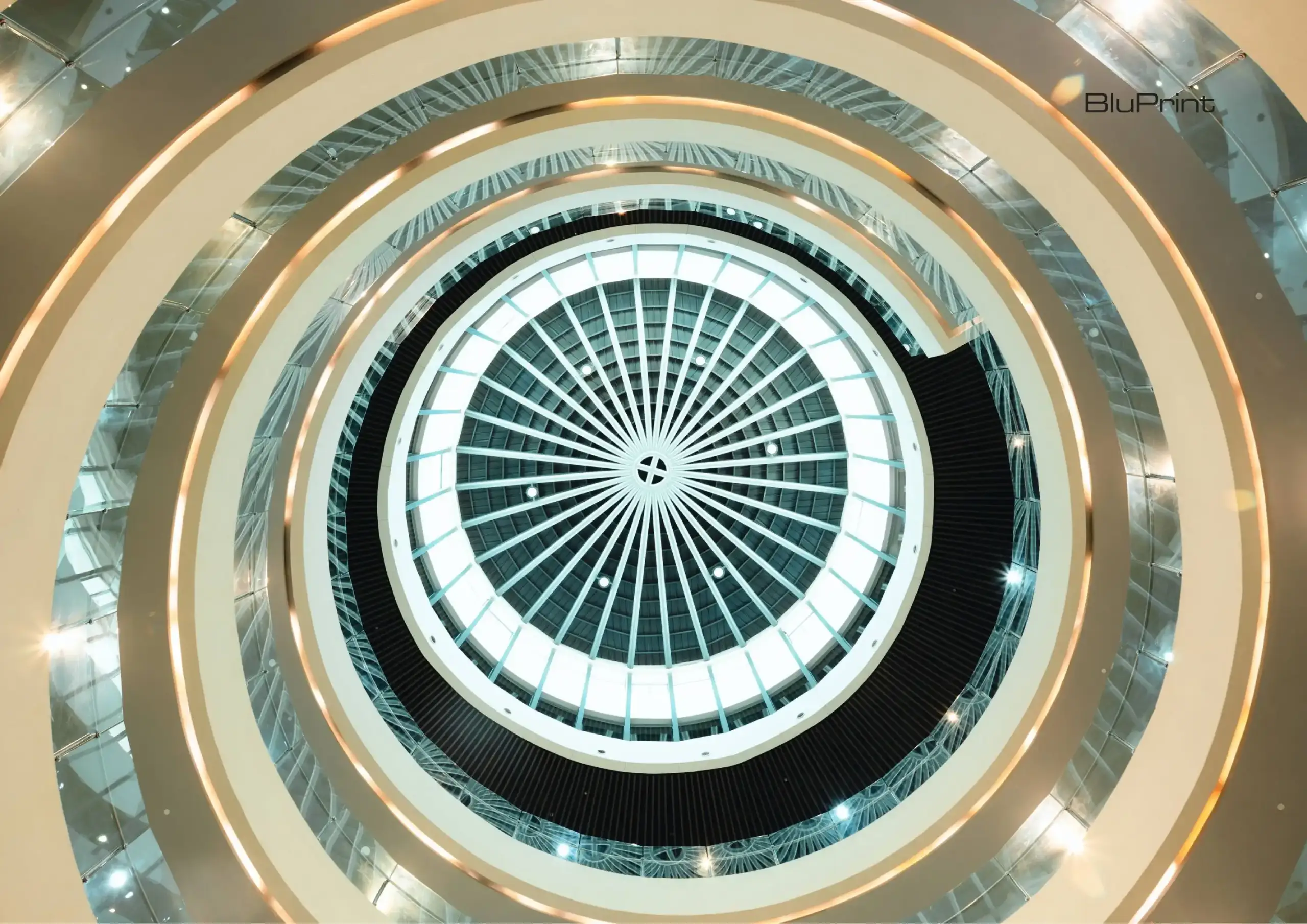“I love the dark. After your eyes adjust, you’d be surprised how much you can see,” the Tayap shares. “When I’m here, I just sit in the dark, enjoying the moon and stars and listening to the night sounds. It’s fun! Especially when my son is with me—he uses Night Sky, an app to point […]
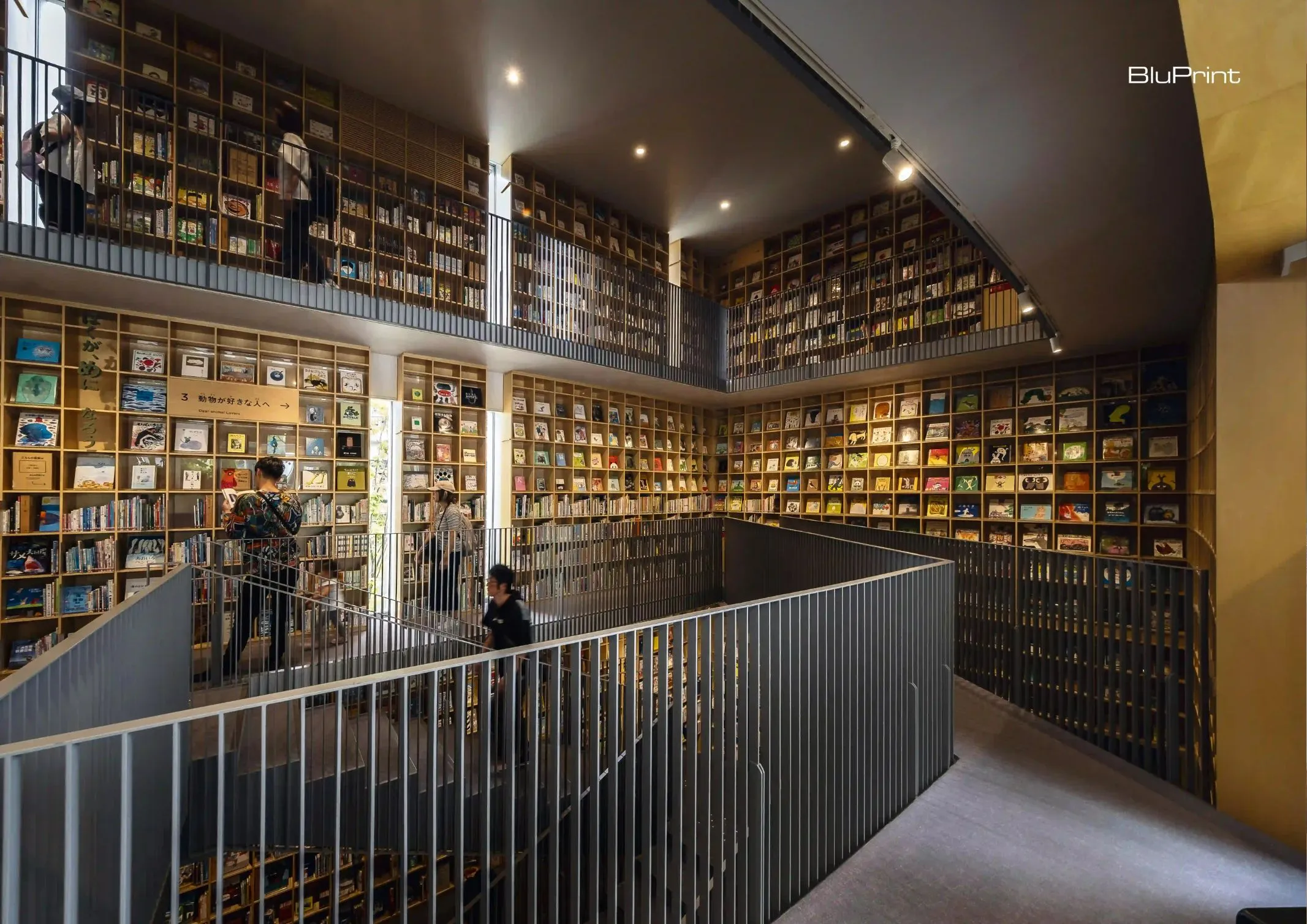
Nakanoshima Children’s Book Forest by Tadao Ando
The Nakanoshima Children’s Book Forest represents a significant and innovative turn in Tadao Ando’s architectural language. Here, the Pritzker Prize-winning architect transforms his signature exposed concrete from a material of monumental austerity into the foundation for a warm, organic, and living ‘forest’. He designed this unique space to physically and intellectually nurture Japan’s next generation, proving that even the most formidable materials can create environments of profound playfulness and wonder.
An Act of Architectural Philanthropy
Opened in 2020, Tadao Ando personally funded the library and then donated the completed facility to his home city of Osaka. This gesture transcends a simple donation, acting as a deeply personal statement on architecture’s role in civic life. Ando conceived the building as an altruistic gift and a method of passing the torch to the children of the city that shaped him. The core philosophy driving the project is that books provide “nutrition for the developing mind,” and that architecture can serve this need by creating an inspiring vessel for knowledge.
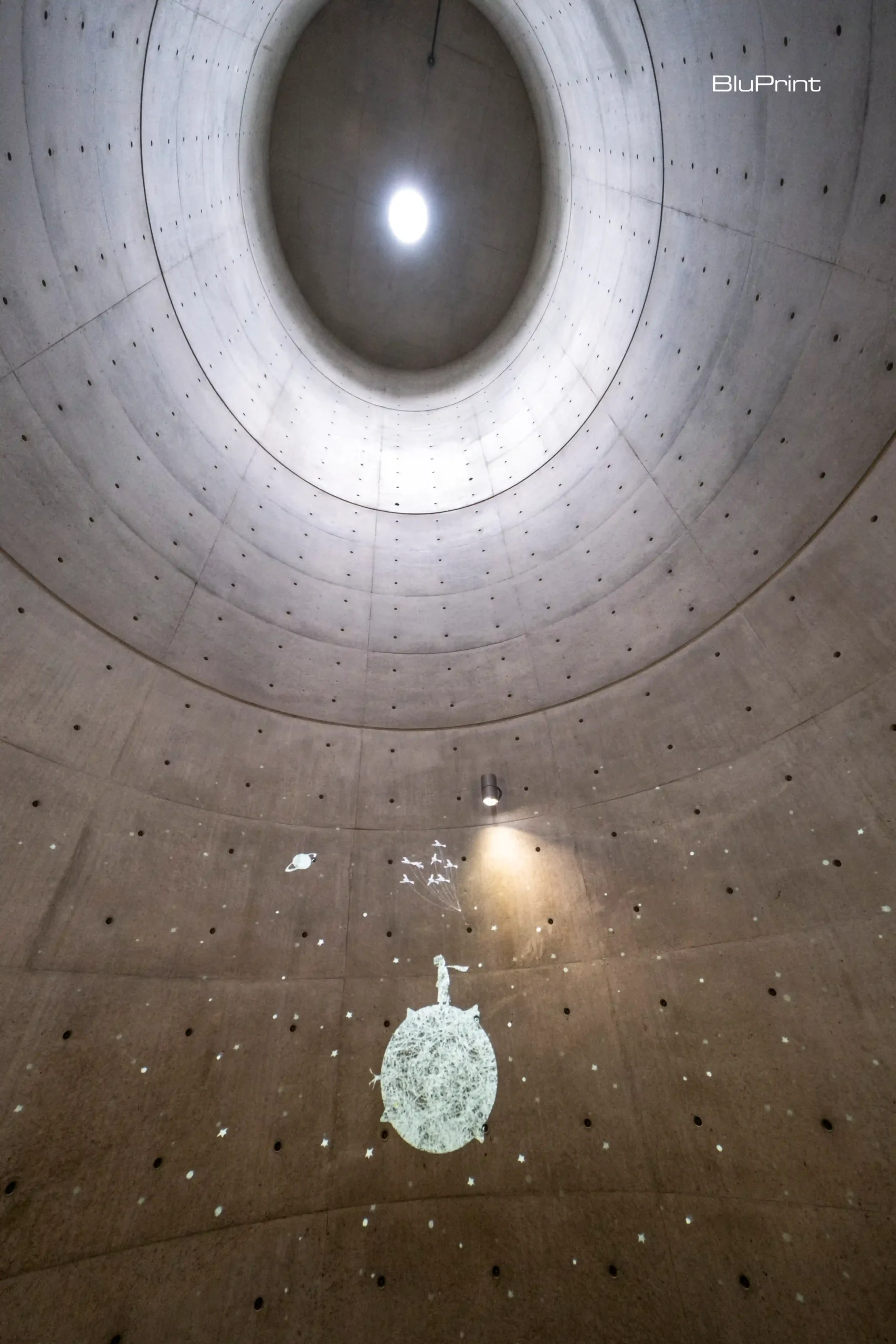
Located on a narrow, crescent-shaped island in Nakanoshima Park, Ando designed the building to be a seamless part of the city’s cultural and natural fabric rather than an isolated object, surrounded by water and greenery among Osaka’s most important cultural landmarks.
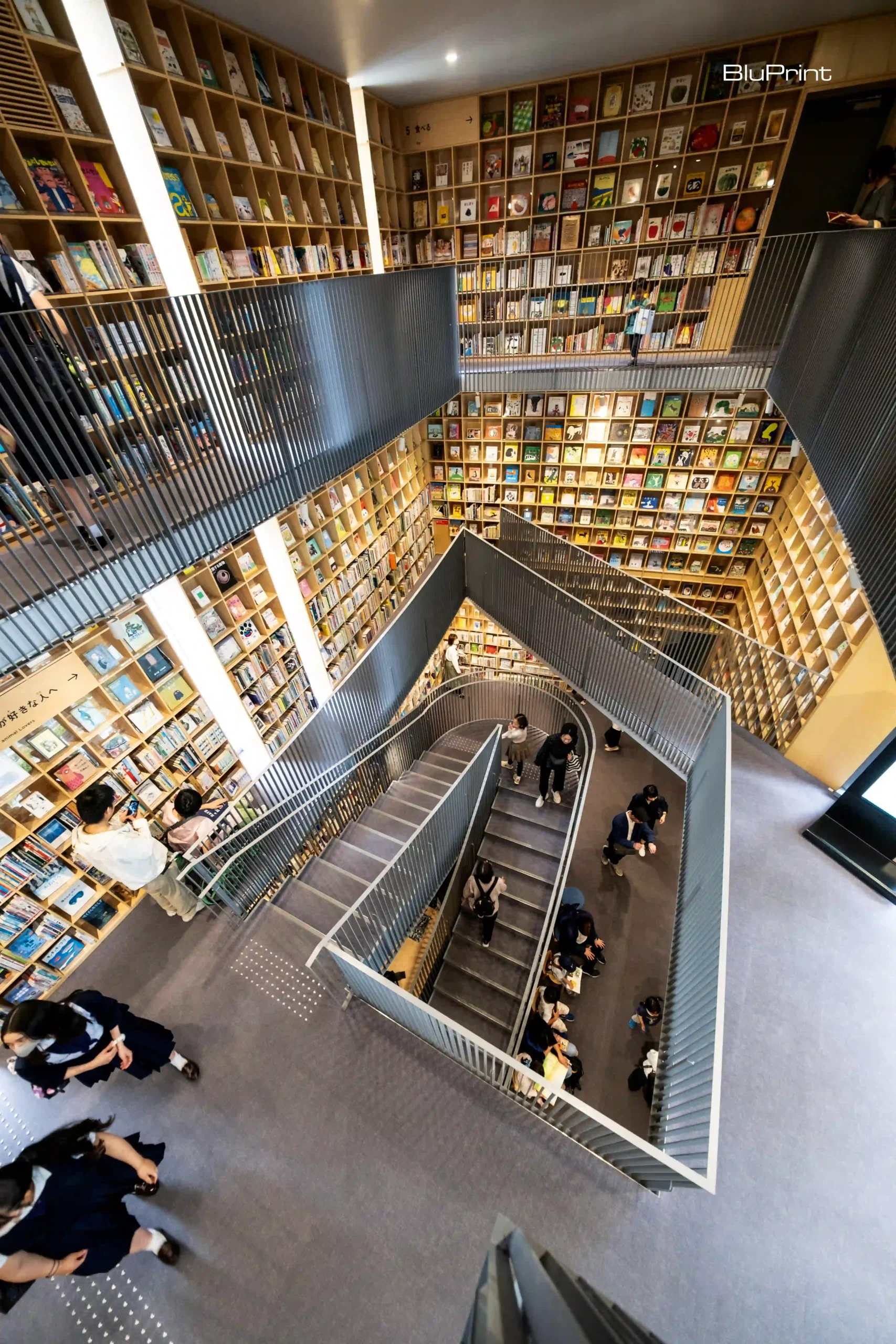
Upon entering, the library’s central, defining feature immediately envelops visitors: a soaring, triple-height atrium lined with floor-to-ceiling bookshelves. These walls of literature curve dynamically to follow the building’s arc along the river, rather than being static or flat. This powerful gesture creates an immersive, all-encompassing environment that lives up to the building’s name. It is a literal forest of books, where the sheer volume and presence of stories, knowledge, and art inspire awe.
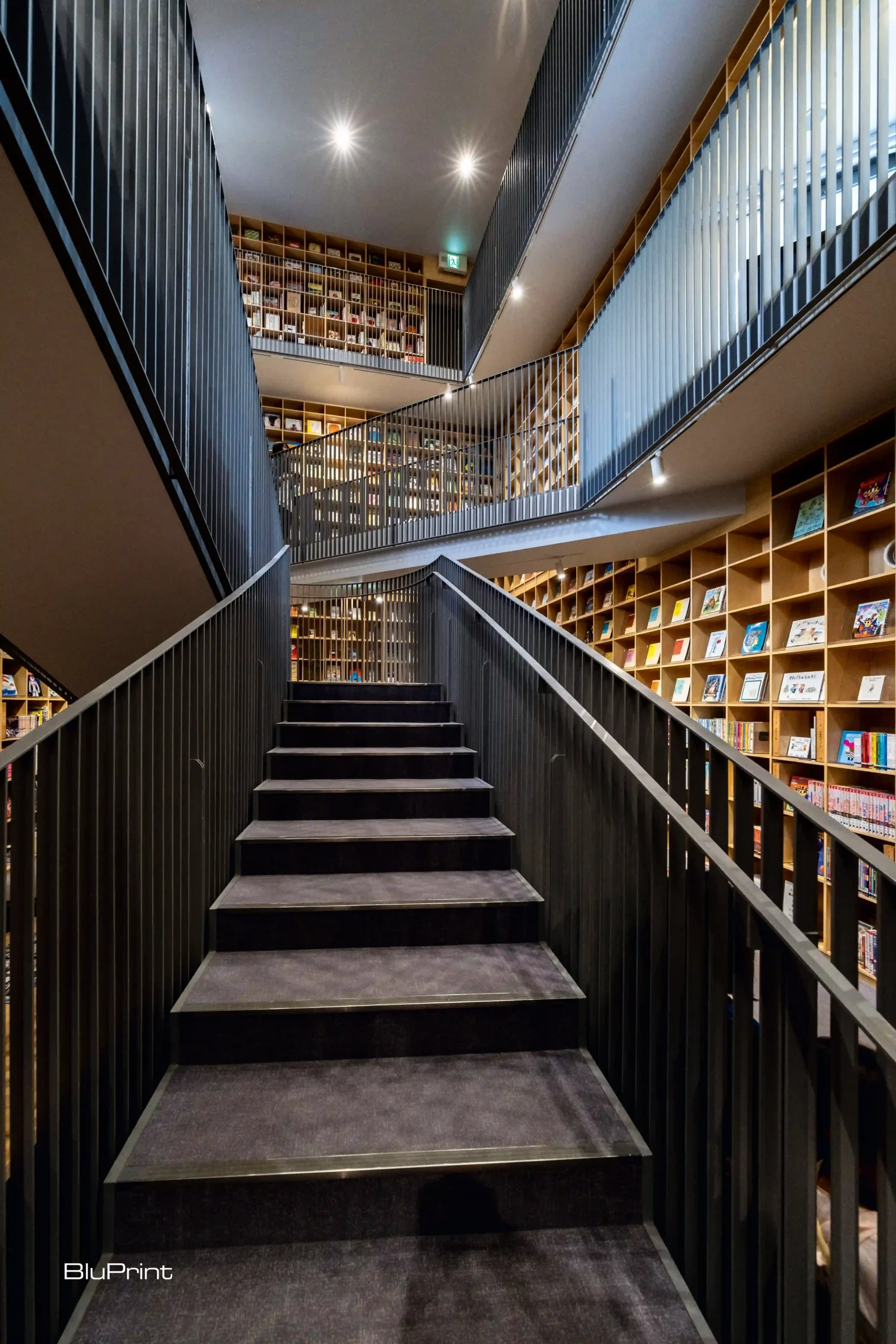
Ultimately, the Nakanoshima Children’s Book Forest makes a powerful case for the enduring value of physical space and tactile experience in a digital age. Visitors cannot check out books; instead, the design encourages them to read within the library or take them into the adjacent park. By insisting on this direct engagement, Ando champions the physical book as a vessel of history and memory. He built this unique institution to foster curiosity and nurture dreams, creating a timeless, concrete gift from one of Osaka’s greatest sons to its most hopeful future.

Explore the hallways of the Nakanoshima Children’s Book Forest by ordering your copy of BluPrint Volume 2, 2025 at Sari Sari Shopping, Shopee, and Lazada. E-magazines are also available for download here or through Readly, Press Reader, and Magzter.
Dive into the captivating world of architecture, interiors, and arts & culture by getting exclusive digital access to BluPrint’s past and upcoming issues. Click here to find out more.
Photographed by Ed Simon

